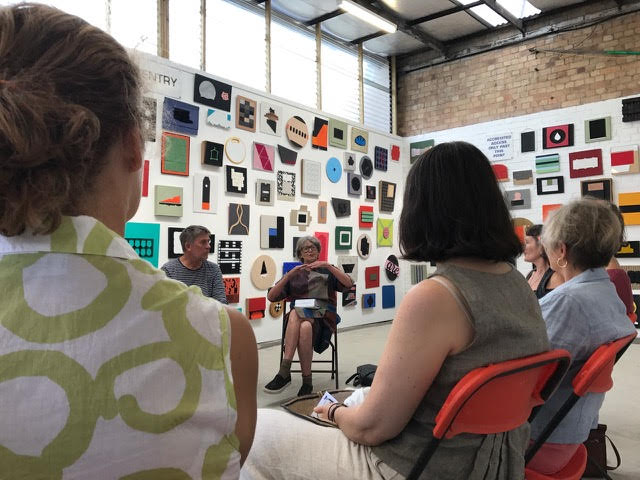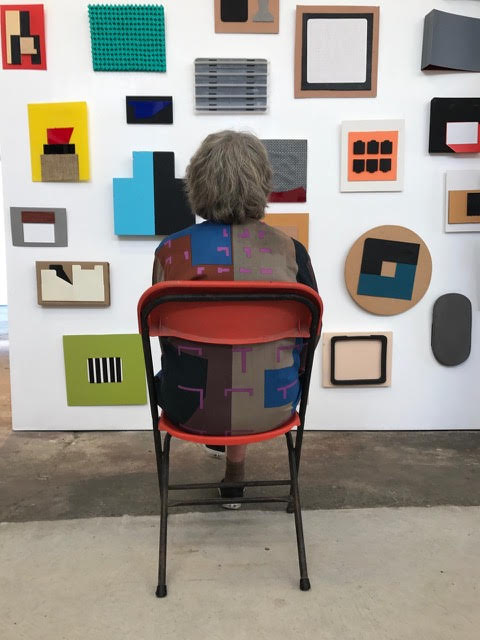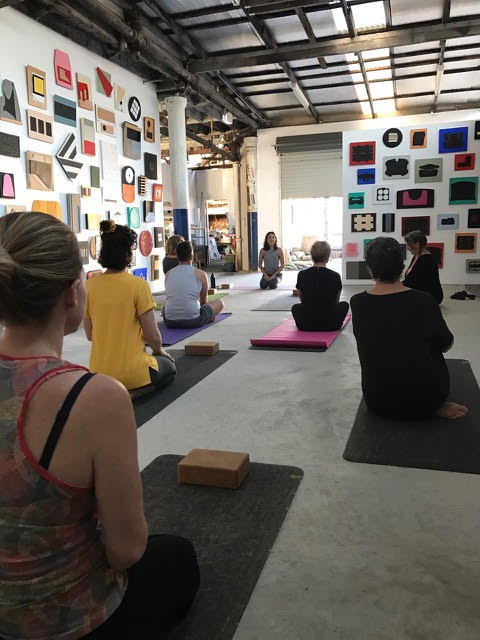[In this series, we interview hosts for Slow Art Day and get their thoughts on hosting, the art of looking, and the slow art community. Today we interview Elle Credlin, the Public Programs officer for Bayside City Council in Sandringham, Victoria, Australia.]
Slow Art Day: Tell us about yourself and about Bayside City Council’s Art and Heritage Collections.
Elle Credlin: I’m Bayside City Council’s Art and Heritage Collections and Public Programs Officer. I have a Bachelor of Arts (History) and a Postgraduate Diploma in Cultural Heritage/Museum Studies. My role is to manage Council’s art and heritage collection and also run public programs for the Gallery @ BACC. Council’s art and heritage collection is comprised of over 2000 items including municipal records, plans, maps, textiles, photographs, mayoral regalia and a range of visual arts.
Slow Art Day: That’s great. Tell us more about your role as Public Programs Officer.
Elle: I develop and manage the range of public programs and outreach services to accompany and enrich the exhibition program. These include things like curator’s talks, workshops, tours, art appreciation evenings and now Slow Art Day! We also run an Art and Dementia program titled Connections. Through discussion based tours of art work, the program provides a unique opportunity for people living with dementia to connect, interpret and express experiences through a work of art.
Slow Art Day: Please tell us more about the Dementia program. Do many other programs like that exist in Australia?
Elle: Connections is based on the National Gallery of Australia’s award winning Art and Alzheimer’s program. In 2012, gallery staff received training from NGA educators in how to deliver the program. Each program runs over a four week period and three works of art are discussed each week amongst the four participants. The program employs specialised forms of communication and strategies to encourage participation and support inclusiveness. These strategies include hand gestures, smiling, leaning forward and allowing for silence. It is run during normal gallery opening hours to prevent the marginalising of participants. We are really proud of Connections because it extends beyond many activities commonly available to people with dementia. Participants are able to engage in meaningful activity in an environment where their intellect is respect and valued. As far as I’m aware, we are the only local municipal gallery that runs this particular type of program in the state of Victoria, but that may have changed.
Slow Art Day: Why are you so passionate about making art more accessible?
Elle: I absolutely hate the idea that people could be intimidated or frightened by visiting a gallery or find themselves plagued by the ‘white box syndrome’. Galleries should be inclusive and welcoming. Every single person should have the opportunity to experience the richness of the arts. More broadly, as we are based within a local government context, we also need to align ourselves with the broader organisational mission of inclusivity, accessibility and facilitating opportunities for people of all abilities to participate in community life.
Slow Art Day: We obviously agree. Switching gears – Slow Art Day has really taken off in Australia. There are 13 venues in Australia making it more than 5% of the total worldwide venues yet Australia has only about .3% of world population. Why do you think Slow Art Day is such a big hit there?
Elle: I’m not sure, that is a really interesting question. Melbourne, in particular, has a thriving artistic and cultural scene so that could have something to do with it. Maybe the fact that Slow Art Day is an accessible and affordable activity mirrors the ‘fair go’, non-elitist attitude of many aspects of Australian culture and life i.e. that everyone should have access to the same opportunities and experiences.
Slow Art Day: Say more about ‘fair go’ – is that Australian lingo?
Elle: ‘Fair go’ is a very Australian term. Although it has many different meanings, I think it is fundamentally a commitment to egalitarianism in all aspects of culture and life; that we are all given every reasonable opportunity to access to the same opportunities and rewards. That is how I see it anyway.
Slow Art Day: What more can you tell us about your event? Have you chosen your art?
Elle: For Slow Art Day, we will be celebrating the works of a number of significant early 20th century Australian artists, including Tom Roberts, Frederick McCubbin and Arthur Streeton. We will be having lunch in the municipal chambers. If it’s a nice day, we might sit out in the rose garden.
Slow Art Day: You plan to make Slow Art Day a regular fixture in your public programs. Does that mean you plan to do regular events throughout the year based on slow looking?
Elle: Yes, Slow Art Day will now be a regular feature in our program. Our Art and Dementia program, as mentioned, is very much aligned with the idea of slow looking. We also host ‘soiree’ type evenings with wine and cheese, which are very popular. These evenings are very relaxed and people are encouraged to take their time with the works.
Slow Art Day: Let’s finish by asking what’s one of your favourite pieces of art? And why?
Elle: That is a hard question! I love Ben Quilty’s work. I think he’s amazing.
[Make sure to check out Elle’s Slow Art Day event at The Gallery at BACC in Brighton, Victoria.]



